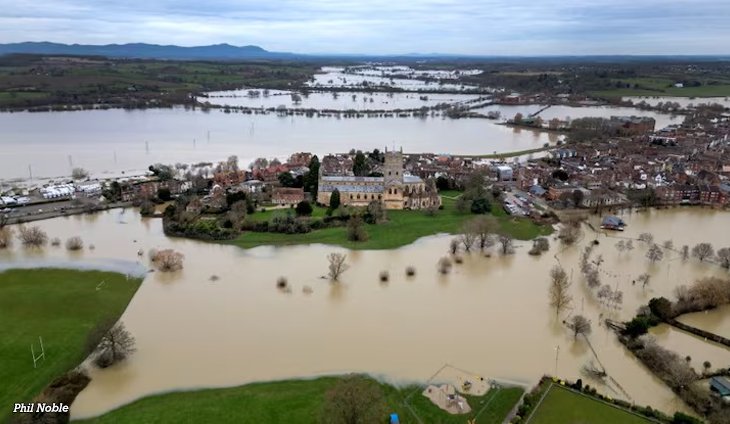Source: REUTERS
By Carolyn Cohn
LONDON, Aug 8 (Reuters) – Increased flooding in Britain from overflowing rivers and blocked drains is leading insurers to pull back from offering cover, particularly for commercial properties and residential landlords, industry representatives say.
London was among British cities hit by flash floods last week after torrential summer rain, while several southeastern U.S. states have this week been inundated by Tropical Storm Debby, in stark reminders to insurers of the rising risks from climate change and urbanisation.
Britain’s Flood Re, a joint initiative between government and insurers to help provide home flood insurance, said a third of claims since its 2016 inception came in during 2023/2024, following winter storms Babet, Ciaran and Henk.
Major UK broker Howden said it had received three times as many UK home flood claims since September 2023 than in the previous year.
“The biggest issue (with) insuring property, in our home business, is climate change,” Amanda Blanc, chief executive of FTSE 100 insurer Aviva AV.L told Reuters.
The increased claims are prompting insurers to review their appetite for risk. They are responding with higher premiums and reduced cover, particularly for commercial properties and aroundfive million privately-rented homes in England not covered by the Flood Re programme.
Flood Re imposes a levy on insurers to cover flood risks in home insurance policies.
A landlord-owned property perceived as risky could face an excess – the amount the owner has to pay before insurance kicks in – of 2,500 pounds ($3,175.25), rather than the usual 250 pounds, said Steve Barnes, head of broking at Total Landlord Insurance.
‘UNDERWRITING THE INEVITABLE’
A property at high risk of flood is likely to get no insurance at all for flood damage, Barnes said.
Residential landlords, however, often cannot do without insurance, as lack of flood cover can make it impossible to get financing, said Jason McClean, director at The Property Insurer, a broker which arranges insurance for properties not covered by Flood Re.
Insurers said they will work with clients to provide cover, but they will not underwrite the inevitable.
“If a site has flooded year on year on year, there’s no point quoting insurance for it,” said Jason Harris, CEO, International, at global commercial insurer QBE QBE.AX, which has operations in the Lloyd’s of London market.
The risks are expected to rise substantially over time, analysts say.
The annual frequency of a 1-in-100 year flood in Medway in southeast England is forecast to rise to 1.5% during the 2020s, a 50% increase from the historical norm. By the 2090s, that climbs to 3.2%, a 320% increase from the historical norm, according to data from S&P Global Sustainable1. Medway is particularly prone to flooding as it encompasses two major rivers.
Insurers are taking a house-by-house approach to manage their exposure.
“It’s a very, very specific, localised, granular underwriting methodology,” said Adam Winslow, chief executive of Direct Line DLGD.L.
One way to find cover is through parametric products, which kick in when a pre-agreed event has occurred, such as a certain level of water in a property.
“We’re getting to see the pool of stuff that either no one else wants to write, or they are charging high premiums or excesses,” said Ciana Kenny, senior distribution manager at parametric insurer FloodFlash.
FLASH FLOODS
Building on areas close to rivers is part of the problem.
Aviva’s Blanc said it was “extraordinary” that more than 100,000 homes have been built on flood plains in England in the last decade.
Flood Re does not cover properties built after 2009.
A one in 1,000-year flood from the River Dee in Chester in northwest England would affect an area around 1% larger than only two or three decades ago, according to analysis by flood modelling firm JBA Risk Management.
Flash floods caused by the inability of surface water to drain successfully are compounding the issue, insurers say.
“The biggest problem in the UK is that there’s no longer any run-off”, said Malcolm Roberts, CEO of global property insurer FM. “What used to be farmland is now concrete and roads.”
($1 = 0.9152 euros)
($1 = 0.7873 pounds)
(Additional reporting by Yadarisa Shabong in Bengaluru, editing by Sinead Cruise and Tomasz Janowski)

